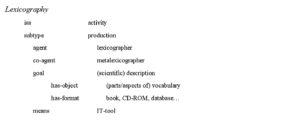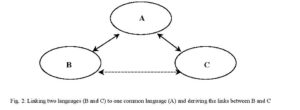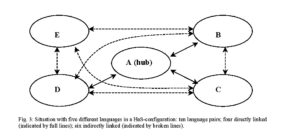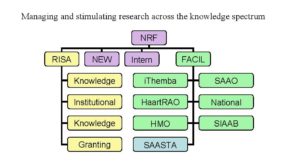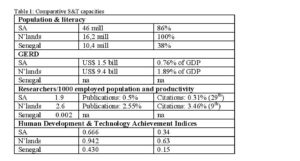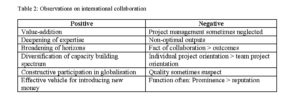The Vrije Universiteit And South Africa ~ Political Studies In South Africa. A Personal Perspective
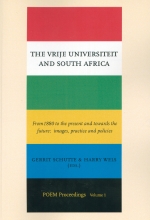 First, let us consider the discipline’s demography in South Africa. Over the last ten years political studies or political science has been taught in each of the country’s 21 universities. Aspects of the discipline were also taught in public administration courses at polytechnics; several of these institutions are now being amalgamated with universities. Historically, as with other areas of social science, politics as an academic community was sharply divided, socially and intellectually between the English language universities and the Afrikaans medium institutions. Within Afrikaner departments, traditionally, the discipline was influenced quite heavily by American behaviouralist and quantitative social science models and methods and researchers tended to focus their work within the confines of the formal political system (including the structures of ethnic homeland government). At the segregated black universities, departments were often led and staffed by graduates from Afrikaans institutions as well as from UNISA. In English speaking departments, by the 1980s, Marxist approaches had supplanted traditionally liberal ideas about politics and leading researchers concentrated their attention on popular political movements, emphasising those dimensions of their activities and ideas that corresponded most closely with expressions of class consciousness. In this context, the study of the discipline had a strong historical dimension: indeed at institutions such as Wits and Cape Town the boundaries between a ‘revisionist’ history grounded in Marxist conceptions of political economy and the discipline of politics became very blurred indeed. Today, though legacies of these differences between Afrikaans and ‘English’ institutions remain, the distinctions between Afrikaans-speakers and English language practitioners of the discipline in South African are less important, particularly since the introduction of English language courses at Afrikaans universities.
First, let us consider the discipline’s demography in South Africa. Over the last ten years political studies or political science has been taught in each of the country’s 21 universities. Aspects of the discipline were also taught in public administration courses at polytechnics; several of these institutions are now being amalgamated with universities. Historically, as with other areas of social science, politics as an academic community was sharply divided, socially and intellectually between the English language universities and the Afrikaans medium institutions. Within Afrikaner departments, traditionally, the discipline was influenced quite heavily by American behaviouralist and quantitative social science models and methods and researchers tended to focus their work within the confines of the formal political system (including the structures of ethnic homeland government). At the segregated black universities, departments were often led and staffed by graduates from Afrikaans institutions as well as from UNISA. In English speaking departments, by the 1980s, Marxist approaches had supplanted traditionally liberal ideas about politics and leading researchers concentrated their attention on popular political movements, emphasising those dimensions of their activities and ideas that corresponded most closely with expressions of class consciousness. In this context, the study of the discipline had a strong historical dimension: indeed at institutions such as Wits and Cape Town the boundaries between a ‘revisionist’ history grounded in Marxist conceptions of political economy and the discipline of politics became very blurred indeed. Today, though legacies of these differences between Afrikaans and ‘English’ institutions remain, the distinctions between Afrikaans-speakers and English language practitioners of the discipline in South African are less important, particularly since the introduction of English language courses at Afrikaans universities.
South African politics departments are small – between five and ten full time staff is normal, though Wits with its separate establishments for political studies and international relations employs more than twenty political scientists. Overall at the universities there are around 200 or so politics lecturers teaching about 10,000 students enrolled in undergraduate courses. This has been an expanding student population: in the aftermath of the ANC’s accession to government politics classes grew swiftly, contracted slightly in the late 1990s and once again grew, a reflection of trends in secondary school matriculation as well as optimistic perceptions among students about the subject’s vocational utility. Most first year politics classes (including those at former elite institutions such as Wits and Pretoria) are now recruited mainly from working class districts in African townships, though Cape Town and Stellenbosch represent exceptions to this generalization.
Traditionally, South African universities undertook very little post graduate teaching in political studies – more in Afrikaans than in English – but essentially politics departments directed their teaching at undergraduates. At Wits, for example, between the Department’s establishment in 1955 and 1990, four students completed PhDs, though a rather larger number undertook the traditional entirely research based Masters degree. This has changed: all universities offer coursework masters programmes in politics and related fields and several have succeeded in registering substantial PhD-enrolments, drawing significant numbers of their post-graduates from SADC countries and elsewhere in Africa. A growing proportion of the post-graduates are black South Africans but in most institutions this is quite a recent trend: the first black South African to obtain a doctorate in politics at Wits graduated in 2000. At the former homeland universities (which remain more or less exclusively black in their intake) their own graduates today predominate among staff in politics departments though their leadership was augmented in the 1990s by senior appointments from universities in other African countries.
Research in politics remains concentrated in the historically white universities. A rough tracery of its intellectual preoccupations and of the distribution between institutions of the most active researchers can be obtained through looking at the contents pages of Politikon, the biannual journal of the South African Political Science Association.
Between 1994 and 2004, and including the first issue this year, 100 articles appeared in Politikon. Not surprisingly, South African politics predominates within the content of these articles. The work on South Africa has three major focuses. Nineteen of the articles concern democratisation and South African progress in the consolidation or deepening of democratic institutions. A second area that has attracted vigorous research is elections: 14 articles explore various recent South African elections and the behaviour of voters, parties and officials during them. Finally, ten articles address different dimensions of foreign policy; these divide equally between those premised on conventional theoretical presumptions in international relations and advocates of ‘critical theory’ who seek a paradigmatic shift away from state centred notions of bilateral or multilateral relations in favour of more emancipatory notions of international citizenship. We will consider briefly, in a moment, some of the key debates in these three areas, democratisation, electoral behaviour, and foreign policy.
We can note, now, though, certain key omissions from the topics addressed by Politikon’s authors. Not a single article addresses protest politics nor a specific instance of insurgent collective action, though one theoretically oriented discussion of social movement theory by a Swedish PhD-student appeared in 2000. We know from the longitudinal survey and press data bases compiled by the Wits/HSRC/Vrije Universiteit that popular propensities to participate in peaceful kinds of ‘direct action’ (strikes, demonstrations, land invasions, etc.) did not decline significantly, at least during the Mandela administration, though the geographic distribution of such activity became more dispersed, a consequence of the new sites of political power that were established after 1994. The Durban Centre for Civil Society has emerged as the main centre for serious research on so called new social movements, but its findings have yet to make a major impact in the discipline. Another striking silence in the Politikon research concerns the state and the social relationships surrounding it.
Instrumentalist notions of the state as an agency of various combinations of class interest were a major theme in English language South African political studies through the late 1970s and 1980s though approaches that emphasised the state’s degree of social autonomy and the political predispositions of different bureaucratic factions within it (including the army) were beginning to shape political analysis by 1990: even so the completeness of the apparent abandonment by South African political science of class analysis is somewhat startling. In fact, here Politikon’s titles pages misrepresent rather the overall state of the discipline; South African critics of the government’s ‘neo-liberal’ economic policies who assign to the Mbeki administration a comprador role as agents primarily of international capital prefer to publish in Review of African Political Economy, Monthly Review, and, locally, in Dissent. Even in this work though, the local sociology of political power and wealth remains surprisingly under-explored.
Scanning ten years of Politikon suggests that research is quite unevenly distributed among universities. Twenty-one of the articles are from the University of Stellenbosch and Wits staff or students contribute another 18. Cape Town and Western Cape political scientists are also quite frequent contributors. During the period under review the journal published only one article from one of the former homeland universities, by the Nigerian head of politics at Transkei. Only three contributions are from black (African) South Africans, each of them Wits post graduates. Of course Politikon is not an altogether reliable base from which to make generalizations: several other locally edited journals attract a slightly different range of contributors and both the (Pretoria) Africa Institute and the Harare-based African Political Science Review make a point of publishing work by black South African political scientists, much of directed at understanding and promoting African regionalism and pan-African institution building. It is also the case that much of the best local scholarship is published in European and North American journals However, even if this wider range of publication was also to be taken into consideration, the trends in the discipline’s development over the last ten years would not look very different from an overview of the content of Politikon.
So, what are the key issues for South African political scientists in their evaluations of democratisation, in their analysis of elections, and in their considerations of foreign policy, especially with respect to South Africa’s role in Africa?
What claims can be made for South African democracy since 1994? Much of the academic commentary has been negative. UCT’s Bob Mattes notes the failure of the economy to expand at the rate needed to create jobs, persistent social inequalities, a constitution that reinforces executive control over the legislature and hence accentuates centralising tendencies in a one party dominant system. Within the ANC itself, Mattes perceives an ‘increasing tendency’ for ‘party bosses’ to stifle dissent. Alarming constitutional amendments and the use by ANC leaders of state agencies in investigations directed at their rivals in the party round off a prognosis of early ‘institutional decay’. Trends observable in public opinion indicate at best lukewarm support for democracy, especially among the racial minorities and declining trust in political leaders and state institutions. South Africans, pollsters suggest, have highly substantive understandings of democracy, that is they are more likely to view socio-economic benefits as essential components of democracy rather than civil liberties. Compared to citizens in neighbouring countries, South Africans are least predisposed to active forms of civic participation. Such evidence suggests that of democracy’s prospects in South Africa are fragile to the extent that its survival is a function of the popularity of its core values (Mattes 2002).
More in the same vein is widely available and there is no need to relay such arguments in detail here.[i] Among the pessimistic assessments of South African democratic performance and likely future trajectories there are different explanations for why the outcomes of political transition have been so disappointing. One line of argument is to locate the reasons for democratic shortcomings in the deficiencies of the constitutional system, and in particular in the electoral system which provides no incentives for representatives to make themselves accountable to citizens. Another quite widely held view is that neither of the two main players during the negotiations, the ANC and the National Party government, were profoundly committed to democracy and, to cite Pierre du Toit, the ANC in particular was negotiating in ‘bad faith’: assured by their own opinion polls of electoral victory, a temporary embrace by its authoritarian leaders of liberal values was merely a means to the realisation of an ultimately anti liberal transformative project (Du Toit 2001; 2003). In this reading, the ‘progressive colonization’ by the centre of ‘independent checks on executive power’ (Butler 2003: 111) offers increasing confirmation of the ruling party’s ‘hegemonic’ aspirations.
Left wing as opposed to liberal commentaries offer equally gloomy diagnosis of the ANC’s performance in office. Here the ANC’s failings are not so much the consequence of its Leninist heritage but rather the effect of the bad bargain it sealed with multinational capital in the run-up to constitutional negotiations in which leadership supposedly committed itself to accepting the constraints of a globalised market economy and to confining social reforms within the fierce restrictions of a neo-liberal growth strategy. In this view the ANC’s centralisation of power in the executive is a defensive reaction to the growing threat posed by the social movements of the very poor whose expanding constituency is responsible for the withering of the ANC’s own popular base and the general reluctance of citizens to participate in whatever consultative procedures remain within the formal political framework.[ii] From this perspective, the local social group most likely in the future to exercise decisive influence on pubic policy is composed of the beneficiaries of black economic empowerment, many of them former ANC office-holders.
My own work offers rather more complicated readings of South African democratic performance. In contrast to the evaluations just cited, I find that with respect to social delivery, the government has generally met citizen expectations. In fact the expanded provision of public goods – including grants and pensions, subsidised housing, clean water in the countryside, primary health care facilities, and so on – has been on a scale that makes the characterisation of government strategy as ‘neo liberal’ fairly implausible. This is an administration that has significantly, since 1994, increased the ‘social wage’ since 1994 and in so doing has impacted significantly on inequality statistics, for state expenditure has been substantially redirected at especially the rural poor.[iii] One reason for this is that in 1994, an already quite substantial base for a welfare state was in place; as Jeremy Seekings has noted, from the 1960s onwards the apartheid state provided an expanding range of entitlements to both citizens and subjects (Seekings 2002). These were racially calibrated to be sure, but on a scale that made South African rather unusual in the developing world and which may help explain the pro-active (to cite Charles Tilly) nature of the political claims that black South Africans began to assert from the mid 1970s onwards. The state has expanded, not shrunk, and successful deficit reduction (from in any case a relatively low degree of indebtedness in 1994) makes it likely that its welfare capacity will maintain itself.
Nor do I find the emphasis in some liberal as well as certain feminist analyses of the South African state as ‘patrimonial’ especially persuasive. This is despite the increasingly abundant evidence of venality and rent-seeking among officeholders and officials. In fact it is quite difficult to find conclusive signals as to whether corruption in any sphere is waning or expanding though public perceptions suggest the latter. The apartheid state as it became increasingly demoralised was progressively affected by dishonest misappropriations of public goods and certain patterns of behaviour have persisted; after all in many areas the same officials are in place. My own research suggests, though, that much of the corruption is new, and that it flourishes in precisely those areas in which the state is undertaking fresh obligations to citizens, in housing for example, and that it may be the consequence of changed systems of management rather than inherited traditions, patrimonial or otherwise (Lodge 2002b). It does not exist on a scale that is sufficient to seriously negate any claims about the state’s expanded capacity to meet basic needs: this expansion of the state is, I would maintain, one of the most important political developments since 1994. This is not a system in decay.
I think there are strong grounds for proposing a more optimistic scenario for the survival of the procedural aspects of democracy – generalising from the behaviour of parliamentarians, in opposition and otherwise, the record of the judiciary, and the general vigour of the media. My own recent research preoccupation has been with the development of the party system, surely an indispensable component of a healthy and participatory liberal democracy. So far my data collection and analysis has concentrated on the ANC. I have interviewed at length a range of senior officeholders, but more importantly, with a team of student fieldworkers we have questioned nearly 500 rank and file branch members, mainly in the Gauteng. What have been, so far, our most important findings?
This is not a movement in decline. At the time of our research, at the beginning of 2003, membership was booming at around 400,000 – and the trend continued. Our interest was in kinds of commitments that are required of members. A call by leadership for branches to undertake various kinds of community development work evidently elicited a ready response: about three quarters of the people we had interviewed had been involved in such activities as tree planting or hospital visiting, many several times. A large majority attended monthly branch meetings and about a quarter had been involved in fundraising projects. About a third said they read regularly the ANC’s newsletter. Such data suggested a relatively activated membership and a movement with quite a vigorous local life. Cross tabulating demographic data with branch positions suggested, moreover, a movement that at this level is quite egalitarian: about a third of the women we interviewed held positions on the executive as did a similar proportions of the members who were unemployed. In their responses to open-ended questions we did collect sentiments that suggest that ANC members may be motivated by a mixture of concerns – self interested as well as idealistic – but generally it does appear that the ANC has remained a mass party, and that its activist support remains enthusiastic, not just dutiful. Meanwhile, secret ballots supply a degree of opportunity for members to exercise leverage over leaders at party conferences despite strongly consensual mechanisms in which the crucial electoral dynamic is the bargaining between provincial nomination leaders and national notables.
Internal conflicts within the organisation over the government’s reluctance to provide anti-retroviral medication to HIV-AIDS patients supplies one key instance in which leadership found itself compelled to defer to pressure from within (as well as outside of) the organisation. My guarded conclusion from the evidence that I collected was that so far the ANC has managed to hold back the symptoms of organisational degeneration that often characterise dominant parties that face no serious electoral challenge. In so far that strong parties can benefit democracies, my work on the ANC represents a positive finding: South Africa’s party system includes a least one robust organisation.
Is it likely to develop any more? The more obvious trends from a succession of elections that have resulted in ever increasing majorities for the ANC and persistently fragmented opposition might suggest not, at least not in the predictable future. Popular commentaries often echo the predominant academic evaluation of the ‘founding’ 1994 poll as a ‘racial census’ in which, for African voters particularly ‘the charismatic factor appeared the be the single most important motivation’. African voters supported the ANC then largely because of emotional considerations rather than ‘calculations of interests, benefits and costs’ (Johnson and Schlemmer 1996). As Jeremy Seekings has suggested, though, such findings were comparatively uninformed by opinion polling evidence concerning the motivations of individual voter behavior.
Traditionally South African electoral studies tended to assume that voters made their choices largely as a consequence of the collective predispositions of the communities within which they lived with ethnic and (more occasionally) class membership as the principal determinants of electoral decisions. More complicated sentiments that may have prompted voter identification with particular parties were neglected in studies of pre-1994 elections (Seekings 1997). Evaluations of the 1994 poll as a ‘uhuru’ election are reinforced by references to the International Electorate Commision (IEC)’s inefficiency as well as territorially possessive behaviour by parties whose exclusion from their home bases of rival activists apparently enjoyed general support from intolerant voters. The persistence of evident ‘political intolerance’ among citizens as documented in opinion surveys, the ANC’s willingness to use the advantages of incumbency when contesting successor My own work on elections tends to confirm these suppositions, despite its intellectual base in the traditional preoccupation of South African electoral analysis with the behaviour of parties during campaigning. Both in 1999 and more recently this year, parties tended to emphasise ‘policy and performance rather than identity in their electoral appeals’ (Lodge 1999: 208) with the ANC developing especially sophisticated campaigning strategies with respect to those segments of the electorate perceived to be ‘swing’ voters, especially within the racial minorities. The ANC’s emphasis on door to door canvassing in its traditional base communities also indicate a leadership that did not take loyalty as the guaranteed outcome of ascriptive identities. And with good reason: in my research on the 2000 local elections I used more than 5,000 reports of electoral meetings compiled by a national network of election monitors. Here I found ANC candidates confronted with critical and assertive audiences even in small rural settlements: in the conduct of these meetings there was no indication whatsoever of the deferential style one might expect from the dynamics of patronage ‘big man’ politics; electoral support was quite obviously seen as contractual and conditional on performance. Indeed in these local elections historically white parties were able to make significant inroads into previous ANC strongholds, provided that is that they already had a local organisational presence (Lodge 2001).
A huge expansion of welfare entitlements during the course of 2003 was one key to ANC gains in poor communities in 2004, especially in the IFP (Inkatha Freedom Party) heartlands of northern KwaZulu Natal. Facilitating apparent shifts in African voting choices in the 2000 local elections and in the general election this year were improvements in electoral administration (especially with respect to voter registration) and expanded electoral monitoring as well as a more relaxed local political climate. This year simultaneous elections, and its success in mobilising almost universal support amongst voters in most African neighbourhoods have helped to maintain convictions that the outcomes of South African elections are largely predetermined by the solidarities and ascriptive identities that arise from historic social conflicts, solidarities that are reinforced by the ruling party’s adroit deployment of patronage.
These sorts of assumptions are at odds with the findings that emerge from opinion polling, which suggested, for instance, sharp declines in party identification across a set of intervals between 1994 and 1998 (when identification with the ANC was down to 38 per cent). The gap between the proportions of polling respondents willing to identify themselves with parties and the persistence up to polling day of sizeable shares of the African voting population suggesting to pollsters that they had not made up their mind about who to vote for have suggested to certain analysts that South African voter behaviour is considerably conditioned by performance and campaigning. ‘Discriminate analysis’ of a range of responses concerning economic trends and political performance collected in a 1998 poll enabled a correct prediction of party preferences without knowledge of the respondents’ races, language or classes. To be sure, South African voters are influenced in their evaluations of party performance to a degree by the communal context in which they live, but this does not predetermine their choices: these are the consequence of judgement and to an increasing extent support for the ruling party is conditional (Mattes, Taylor and Africa 1999).
My own work on elections tends to confirm these suppositions, despite its intellectual base in the traditional preoccupation of South African electoral analysis with the behaviour of parties during campaigning. Both in 1999 and more recently this year, parties tended to emphasise ‘policy and performance rather than identity in their electoral appeals’ (Lodge 1999: 208) with the ANC developing especially sophisticated campaigning strategies with respect to those segments of the electorate perceived to be ‘swing’ voters, especially within the racial minorities. The ANC’s emphasis on door to door canvassing in its traditional base communities also indicate a leadership that did not take loyalty as the guaranteed outcome of ascriptive identities. And with good reason: in my research on the 2000 local elections I used more than 5,000 reports of electoral meetings compiled by a national network of election monitors. Here I found ANC candidates confronted with critical and assertive audiences even in small rural settlements: in the conduct of these meetings there was no indication whatsoever of the deferential style one might expect from the dynamics of patronage ‘big man’ politics; electoral support was quite obviously seen as contractual and conditional on performance. Indeed in these local elections historically white parties were able to make significant inroads into previous ANC strongholds, provided that is that they already had a local organisational presence (Lodge 2001). A huge expansion of welfare entitlements during the course of 2003 was one key to ANC gains in poor communities in 2004, especially in the IFP (Inkatha Freedom Party) heartlands of northern KwaZulu Natal. Facilitating apparent shifts in African voting choices in the 2000 local elections and in the general election this year were improvements in electoral administration (especially with respect to voter registration) and expanded electoral monitoring as well as a more relaxed local political climate.
This year simultaneous canvassing of African neighbourhood by rival teams of activists, impossible in1994, was both routine and tranquil, accepted apparently by residents as legitimate. The Democratic Alliance, the runner-up in the 2004 poll, nearly doubled its support, largely due to new allegiances among Indian and Coloured voters and probably from a few hundred thousand Africans as well. No longer an overwhelmingly white supported party, it faces a formidable task in consolidating it’s very dispersed and socially heterodox electoral base. If we are correct, though, that South African voter behaviour is predicated on judgement and choice, rather than the compulsions of history and communal identity, the DA’s mission to become an African party is by no means quixotic. Much will depend, though, on the success of its efforts to establish a living presence in African communities.
As with evaluations of democratic performance, the academic community that focuses on South African foreign policy is sharply divided. Two interpretations reflect conventional approaches in international relations. In one view, South African policy shifted abruptly in 1994, and since then has been prompted generally by idealist efforts to promote new kinds of democratically-oriented institutional architecture in both continental and global governance and to further a collective search for global re-distributive justice. An opposed understanding is to view South Africa’s external relations as motivated chiefly by realist concerns arising from acknowledgement among policy makers of the instability of the international order and recognition of South Africa’s marginal status within it. From this perspective, South Africa’s priorities should be to align herself with powerful industrial countries and exploit her own status as a sub-hegemonic power on the continent.
Advocates of both realist and idealist prescriptions disagree among themselves about the degree to which an ANC governed South Africa has conformed with one other of these policy prescriptions. Generally speaking, though, the trend among analysts working with these concepts is to suggest that South Africa’s foreign affairs is governed by quite skilful exploitation of its role as a ‘middle power’. Here it joins a group of medium sized regionally dominant states that attempt to enhance their international standing by endorsing ‘multilateral solutions to international problems’ and adhering to conventions of good international citizenship. In Africa this has meant, during the Mbeki presidency, adopting a fairly self effacing position on the continent, to the despair of President Mbeki’s realist critics. The rewards for sensitivity to continental protocols are now evident in the major role South Africa has played in designing successor institutions to the OAU as well as the progress in brokering political settlements in Congo and elsewhere.[iv]
This perspective of South African foreign policy as characterised by essentially benevolent principles conflicts with another set of views that stress continuities rather than ruptures with the apartheid era. This view maintains that policy remains bound up with crudely realist conceptions of national interest. In this vein, Thabo Mbeki’s claims to ‘put people first’ in his conduct of foreign policy are only rhetorical. South African democracy is barely procedural and hence to expect a foreign policy that is either formed in a consultative way or informed by people’s needs is naive.[v] The most important social influences on policy makers are conservative and historically entrenched. In a critical appraisal of ‘South Africa’s post apartheid security system’, Peter Vale has noted that too often, South Africa’s relationships with its African hinterland are still influenced by ‘old security habits’, and by its predispositions for ‘constructing southern Africa as an eschatological threat’. This is especially obvious in South Africa’s harsh treatment of African immigrants (Vale 2003). For Vale and other adherents of the ‘critical reflexive’ school in South African international relations scholarship conceptions of national interest, realist or idealist, remain undemocratic and conservative, constrained as they are by international and domestic hierarchies of power and wealth and wedded as they remain to an oppressive matrix of colonially created states and boundaries.
I am not so sure. I am not an international relations expert and have done relatively little work in this area. I have looked recently in some detail at South Africa’s constructive engagement with Zimbabwe and certainly in as much as we can make sensible judgements about its motivations these do seem to accord with a perception of its own role as a middle power that can best exercise leverage on Harare through multilateral continental institutions. However it is also likely that different and conflicting norms or values – informing for example, efforts to promote human rights – may shape policy in ways that make the definition of interests very difficult to fit comfortably into one or other of the dichotomous categories supplied by realist or idealist notions of state behaviour.[vi]
My main reservations concerning the new ‘critical theory’ based approaches to South African foreign policy studies are to do with their grounding assumptions about the world we live in. As I hope I have shown, South Africa’s new democracy can make stronger claims for itself than merely conformity with its procedural formula. To a remarkable extent the South African state has retained its vigour, in defiance of prescriptions that allegedly arise from global capital movements. In general, democracy’s critics in South Africa, both conservative and radical, have been too ready to write off the prospects for the liberatory fulfilment of a politics of modernity. Certainly apartheid was a modernising project and it failed but that failure was despite a degree of societal and economic and cultural transformation undergone by very few other countries in the colonial world. We should not be so surprised if the inheritors of the state created to administer such a complex and sophisticated system of coercive modernization can continue to change people’s lives – for better and for worse. Nor should we be so eager to dismiss the likelihood that political leaders that command such formidable bureaucratic power can free themselves to an extent from the constraining compulsions of global markets and domestic sectional interest to pursue emancipatory goals.
NOTES
i. For an especially useful review see Butler 2003.
ii. See for a good example of this genre Bond 2000.
iii. See Chapter Three in Lodge 2002a.
iv. For a strongly argued idealist projections of South Africa’s role as a middle power see Landsberg (2000).
v. See especially Ian Taylor’s contribution to Nel and Van der Westhuizen (2004).
vi. See for an intelligent development of this argument Black and Wilson (2004).
References
Black, D. and Wilson, Z. (2004) ‘Rights, region and identity: Exploring the ambiguities of South Africa’s human rights role’, Politikon 31(1).
Bond, P. (2000) Elite transformation: From Apartheid to neoliberalism in South Africa, University of Natal Press.
Butler, A. (2003) ‘South Africa’s political futures’, Government and Opposition.
Du Toit, P. (2001) South Africa’s brittle peace: The problem of post-settlement violence, Basingstoke: Palgrave.
Du Toit, P. (2003) ‘Why post-settlement settlements?’, Journal of Democracy 14(3).
Johnson, R.W. and Schlemmer, L. (1996) Launching democracy in South Africa: The first open election, April 1994, New Haven: Yale University Press.
Landsberg, C. (2000) ‘Promoting democracy: The Mandela Mbeki doctrine’, Journal of Democracy 11(3).
Lodge, T. (2002a) Politics in South Africa. From Mandela to Mbeki, London: James Currey.
Lodge, T. (2002b) ‘Political corruption in South Africa’, in A. Heidenheimer and M. Johnson (Eds), Political corruption: Concepts and contexts, transaction books, New Jersey: Holt, Rinehart & Winston.
Lodge, T. (2001) ‘The South African local government elections of December 2000’, Politikon 28(1), May.
Lodge, T. (1999) Consolidating democracy: South Africa’s second popular election, University of the Witwatersrand Press and the Electoral Institute of Southern Africa, Johannesburg, p. 208.
Mattes, R. (2002) ‘South Africa without the people?’, Journal of Democracy 13(2).
Mattes, R. Taylor, H. and Africa, C. (1999) ‘Judgement and choice in the 1999 South African election’, Politikon 26(2).
Nel, P. and Van der Westhuizen, J. (Eds) (2004), Democratizing foreign policy? Lessons from South Africa, Maryland: Lexington Books.
Seekings, J. (2002), ‘The broader importance of welfare reform in South Africa’, Social Dynamics 28(2).
Seekings, J. (1997) ‘From ballot box to the bookshelf: Studies of the 1994 South African general election’, Journal of Contemporary African Studies 15(2).
Vale, P. (2003) Security and politics in South Africa: The regional dimension, Boulder and Cape Town: Lynne Reinner and the University of Cape Town Press.

